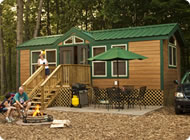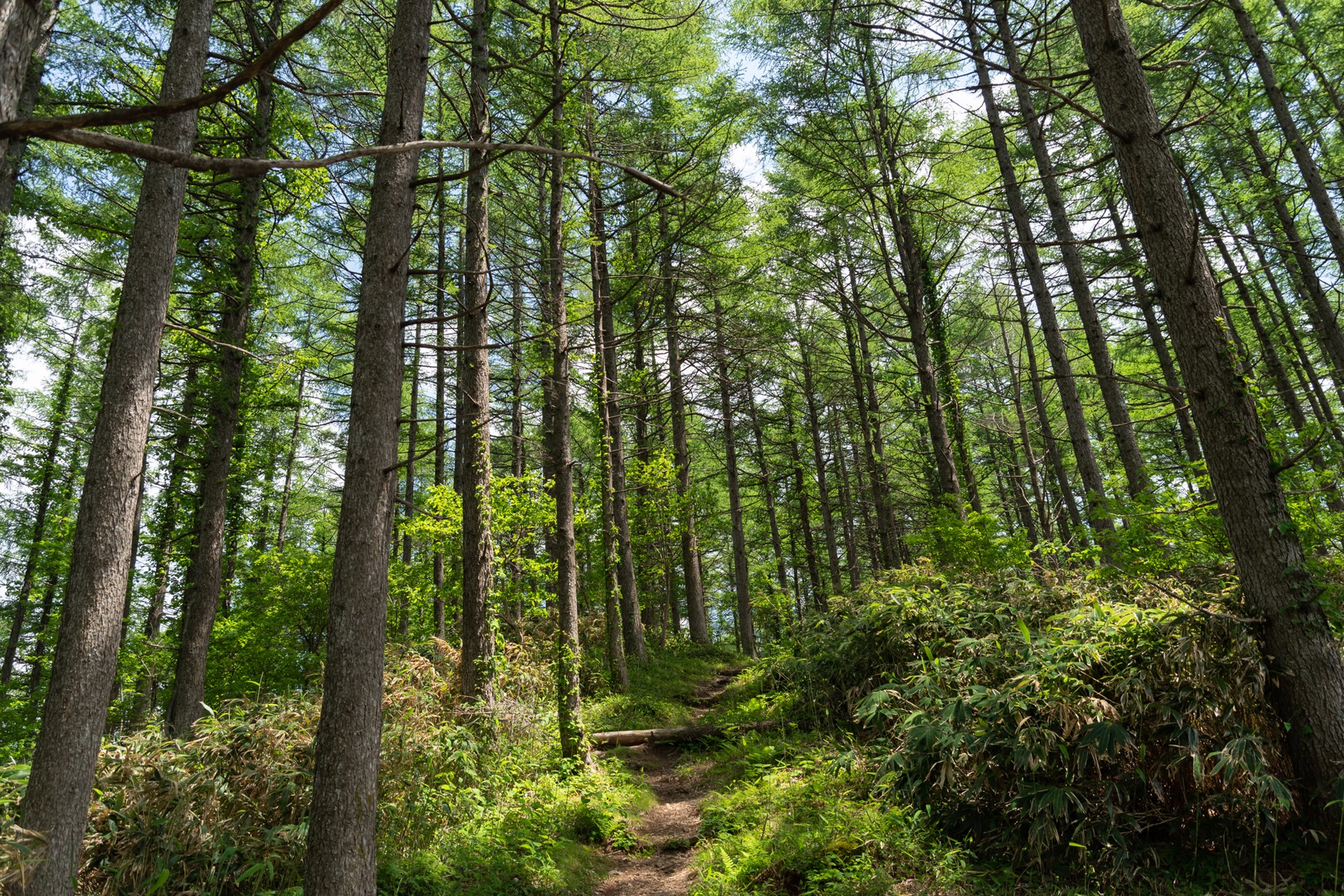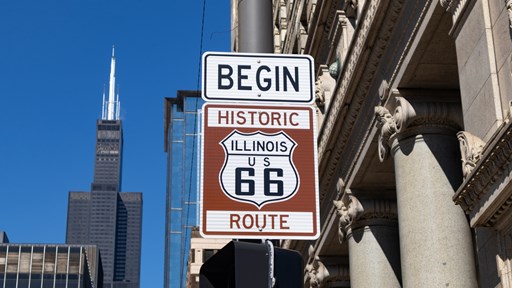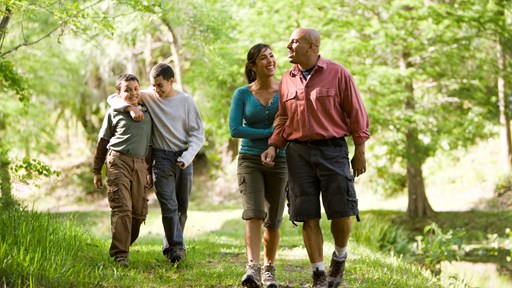As our lives become more and more complicated, finding a way to return to Mother Nature becomes more and more important. Enter: Forest bathing, a healing tool that’s rapidly gaining popularity.
What is forest bathing, and why is it considered the next best thing in the wellness world?
Let’s start with some of the history behind forest bathing and then explore what science backs it, the best places and recommendations for it, and what to do for absolute beginners.
Concept and Origins
Forest bathing, referred to as “shinrin-yoku” in Japanese, was introduced in the 1980s as a form of ecotherapy. The term means “bathing in the atmosphere of the forest,” but you may be surprised to learn that it doesn’t involve any actual water. Instead, this practice is all about being mindful and fully engaged with the forest’s sights, sounds, scents, and textures. It encourages you to slow down, disconnect from your devices, and find a sense of calm by simply being in nature.
Though rooted in Japanese culture, forest bathing is becoming increasingly popular worldwide. Most people use it to address the effects of stress and burnout. Forest bathing is more than just a stroll in the wilderness; it is an invitation to activate the senses and the therapeutic potential that may be available in nature when you carefully immerse yourself fully in your surroundings.

Benefits Backed by Science
The rise of forest bathing in wellness circles isn’t just a trend – it’s supported by scientific research.
Multiple studies have examined the positive impact of spending time in nature on physical and mental health.
Reduces Stress and Anxiety
A key study in the Environmental Health and Preventive Medicine journal found that time spent in forests can greatly lower stress-related cortisol levels. People who practiced forest bathing showed decreased anxiety and an increased feeling of serenity.
The peaceful nature of forests offers a refreshing contrast to the sensory overload often experienced in cities.
Boosts the Immune System
One of the biggest insights into forest bathing is its role in enhancing immune function. Trees emit organic compounds called phytoncides, which help them protect against pests and diseases.
Studies show that when people inhale these compounds while practicing forest bathing, it stimulates the production of natural killer (NK) cells, a vital type of white blood cell that plays a crucial role in defending against infections and cancer.
Improves Mood and Mental Clarity
Spending time outdoors can significantly boost both our emotional well-being and cognitive abilities.
According to research from Stanford University, walking in natural environments like forests can reduce brain activity in regions associated with depression. The practice of forest bathing encourages mindfulness, allowing us to move away from negative thinking and embrace a clearer, more positive perspective.
Enhances Creativity and Focus
Forest bathing is an ideal way to rejuvenate in our distraction-filled world.
A study by the University of Utah discovered that spending just a few days in a natural setting can enhance problem-solving skills and creative thought by nearly a whopping 50%. The forest’s enveloping atmosphere promotes a “flow,” allowing people to access their creativity and improve concentration without the mental chatter we are all so used to.

Finding Your Perfect Spot
It’s not mandatory to practice forest bathing in the woods. But, certain types of environments are particularly suited for it.
Here are a few tips on choosing the best place to do your forest bathing:
- Tall and thick forests: Forest bathing is best enjoyed in places that are peaceful, thick, and rich in many species. For example, an intact old-growth forest with little human activity offers a great place. It offers many layers of plant life and a soft forested floor with plenty of fauna.
- City forests and botanical gardens: Can’t escape the city? No problem. Think of spaces filled with plenty of plants and water bodies and free of artificial noise pollution. Quite a few cities have forest parks or ecological havens where you can get away from the hustle and bustle of the city for a little while.
- Bodies of water: Forestry areas close to a body of water, such as a lake, a stream, or a waterfall, can be incredibly peaceful. Running water auditory images augment the soothing experience of forest bathing, which lowers stress.
Practical Tips for Absolute Beginners
The concept of forest bathing is new to many people and we understand that the word “bathing” in the company of trees and greenery can be a bit strange to wrap your head around. So, we’re breaking it down into some practical steps to help you get started.
Leave Technology Behind
Forest bathing means escaping our digital age’s ordinary, busy, and somewhat noisy life. Switch your phone off, put it on Do Not Distrub mode, or leave it at home altogether.
At a minimum, use your phone for emergency or navigation purposes only.
The point is to let go and picture yourself fully immersed in nature!
Move Slowly and Mindfully
Forest bathing encourages slow, deliberate movement, unlike a hike or a power walk.
Walk slowly, allowing your senses to engage with your surroundings thoroughly.
Pay attention to the texture of the ground beneath your feet, the rustle of leaves, the patterns of light filtering through the trees, and the scent of the forest air.
Engage All Your Senses
Use all five senses during your forest bathing session:
- Sight: Observe the colors and shapes around you, from the canopy above to the tiny details of moss and lichen.
- Smell: Breathe deeply and take in the earthy wood, leaves, and flower scents.
- Sound: Listen to the forest symphony – birds singing, wind blowing through branches, water trickling.
- Touch: Feel the textures of bark, leaves, and soil. Sit on the forest floor or lean against a tree for a connection with nature.
- Taste: While you shouldn’t eat anything from the forest, you can bring a thermos of herbal tea and sip it slowly to enhance your sensory experience.
Practice Mindfulness
Forest bathing is a form of meditation.
As you walk and observe, keep your mind present in the moment.
If your thoughts wander, that’s okay! Just gently guide them back to your surroundings. Focus on your breath and allow nature’s tranquility to fill your mind.
Spend At Least Two Hours
To reap the full benefits, try to devote at least two hours to your forest bathing session.
But if you don’t have that long, that’s okay. Shorter sessions can also provide a significant boost to your well-being. If time is limited, even a brief 20-minute walk in the park can help reduce stress.
Including Forest Bathing In Everyday Activities
Forest bathing is not a one-off activity that allows you to experience nature at a different depth because it can be done as often as you are comfortable or every day. It is often referred to as a traditional Japanese nature therapy that is now widely practiced around the globe.
Here are some of the ways you can practice core forest bathing techniques both indoors and out:
Plan for Strategic Sessions
Choose days of the week to go to the forest, whether for a short stroll at the nearby town park or a full-day walk during a weekend getaway.
Take Nature Inside
Plants and other nature-related items around your bedroom, living room, and office will also help you calm and relax even without stepping outside.
Do Mindful Exercises
To enhance your connection with nature, incorporate mindfulness practices, such as meditation or deep breathing exercises, into your daily routine.

Forest Bathing Destinations
There are popular spots all over the country for forest bathing in the USA. For example, start with one of the 12 popular destinations listed below or find your own suitable location nearby:
- Acadia National Park, Maine
Known for its dramatic coastal landscapes and dense forests, Acadia offers a perfect combination of ocean views and quiet woodland trails. The park’s diverse environments—from mountain peaks to serene woods—make it ideal if you’re looking for a deep connection with nature. - Adirondack Park, New York
This wilderness area, also the most extensive in the Adirondack region, spans well over 6 million acres and can best be described as a haven for forest bathers. The overshadowing woodland cover, sparkling beaches, and craggy terrains make ideal weather patterns for relaxing and being mindful. - Great Smoky Mountains National Park, Tennessee/North Carolina
This UNESCO World Heritage Site is famous for its biodiversity, misty mountain views, and old-growth forests. Its peaceful trails provide a perfect atmosphere for forest bathing, surrounded by all kinds of flora and fauna. - Mark Twain National Forest, Missouri
Stretching across 1.5 million acres, Mark Twain National Forest offers a serene escape with rolling hills, hardwood forests, and clear rivers. Peaceful woodland trails and streams make it a perfect setting for forest bathing, allowing visitors to unwind and reconnect with nature. - Muir Woods National Monument, California
This stunning redwood forest offers mellow trails under towering trees just north of San Francisco. The peaceful environment, lush undergrowth, and babbling brooks make it a perfect location for a mindful, nature-immersive experience. - Olympic National Park, Washington
Olympic is filled with towering ancient trees draped in moss, creating a mystical and relaxing atmosphere. Clean air, lush greenery, and secluded trails offer an opportunity to reset and rejuvenate in the calming embrace of the natural world. - Ozark National Forest, Arkansas
Ozark National Forest provides a peaceful environment for mindful nature immersion with its rich biodiversity, towering pines, and scenic vistas. The forest is home to beautiful waterfalls, quiet streams, and expansive hiking trails, offering plenty of opportunities for relaxation and forest bathing among the stunning natural scenery. - Pisgah National Forest, North Carolina
Picture this: Idyllic woodland, freshwater cascading waterfalls, and the rugged terrain. Sounds like the perfect quiet day outside in nature, doesn’t it? You can hear the water flowing gently, and huge trees are everywhere, making it a fantastic place to practice Shinrin-yoku or forest therapy. - Redwood National and State Parks, California
Home to the world’s tallest trees, these ancient redwood groves offer a majestic setting for forest bathing. The towering redwoods create a sense of awe and calm, while the lush forest floor, ferns, and misty air provide an immersive, meditative experience. - Sequoia National Park, California
This park is home to some of the largest trees on Earth, including the iconic General Sherman Tree. Walking among these ancient giants creates a great feeling of calm and also offers perspective, with the dense forest providing a grounding environment for a forest bathing experience. - Shenandoah National Park, Virginia
Shenandoah offers serene forests in the Blue Ridge Mountains with cascading waterfalls and scenic vistas. The quiet woods and abundant wildlife create an immersive environment for a mindful connection with nature. - White Mountain National Forest, New Hampshire
With its seemingly eternal hardwood and evergreen forests, crystal-clear rivers, and tranquil mountain views, the White Mountains are a peaceful retreat for forest bathers. The quiet trails and fresh mountain air provide a perfect setting for mindfulness and relaxation.
The Importance of Reconnecting with Nature
Forest bathing offers an easy, enjoyable way to reconnect with nature and improve your well-being. By engaging your senses and immersing yourself in the tranquility of the forest, you can reduce stress, enhance mood, and boost your physical health. Who wouldn’t want that?
Whether you’re exploring vast wilderness areas or a local urban park, the benefits of forest bathing are well within reach for everyone.
So why not make time for your next forest bathing session? Nature is calling – and your mind, body, and soul will thank you for answering.

Leslie is a travel writer, copywriter, and web designer who gets butterflies from telling stories through words and visuals.
Her voice comes from a place filled with passion, dreams, and lots of sugar. “Cake over steak” is her go-to motto.
With over 10 years of experience in crafting words, and years of embarking on travels that have taken this Montana girl to some incredible places, Leslie loves the adventures of both body and mind her writing takes her on.
To see what Leslie’s up to in the writing and design world, visit her website here.

























